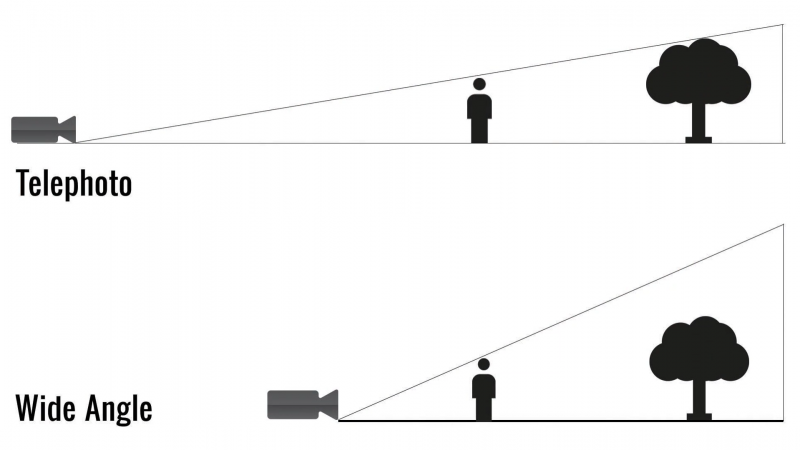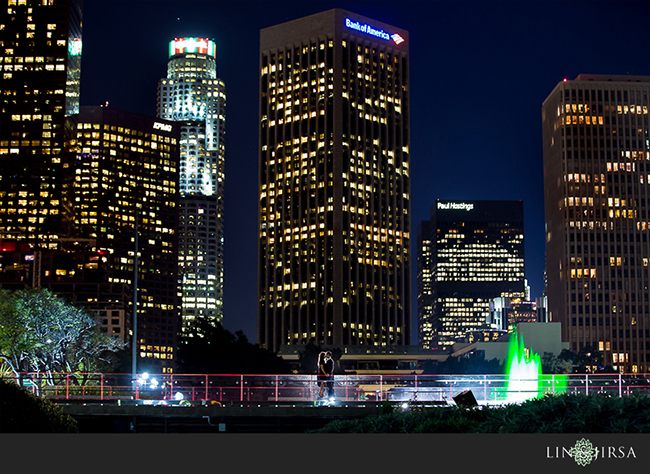-
Term: Lens Compression
Description: A phenomenon in photography involving lenses, specifically telephoto lenses, where the apparent distance between the subject and the background is reduced, causing the background to appear larger and closer to the subject than it actually is. Lens compression occurs when using telephoto lenses, which have a longer focal length. As the focal length increases, the photographer must step back further from the subject to maintain the same framing. This distancing effect creates the illusion that the background is closer to the subject and appears larger in comparison. Notably, this effect can be creatively utilized to produce compelling images, such as those where celestial bodies like the moon appear disproportionately large in relation to the subject.
Lens Compression
Expanded Explanation of Lens Compression

Many of you may have heard of lens compression, but did you know lens compression is actually a type of distortion?
That’s right! Lens compression is essentially the phenomenon of background elements appearing larger than they actually are – hence the scene becomes “distorted” since those background elements appear closer and larger than they are in real life.
But, just because it is distorted, doesn’t mean it is a bad thing. In fact, lens compression can be used to create awesome compositional choices that wouldn’t be possible otherwise.
Let’s show you exactly what we mean. Here we have a line up of Canon prime lenses from the SLR Lounge Canon Lens Wars series:
- Canon 24mm f/1.4L II
- Canon 35mm f/1.4L
- Canon 50mm f/1.2L
- Canon 85mm f/1.2L
- Canon 100mm f/2
- Canon 200mm f/2L
- Canon 300mm f/2.8L II
In our SLR Lounge Canon Lens Wars series, to compare a whole host of different Canon lenses, we took the exact same photo with all of these different lenses while moving the camera back each time in order to keep our composition and subject relatively the same size from image to image.
Focal Length and Lens Compression
Here is how lens compression affects our images at various focal length and distance: When you shoot with a wide angle lens like the Canon 24mm f/1.4L II, several things happen. As you shoot from a closer distance to your subject, objects that are closer to you will appear a far larger than objects that are farther away.
This is also one of the reasons why wide-angle lenses are not really flattering for shooting portraits. Parts of the subject’s face like the nose that are closer to the camera will look a lot larger then usual, while other parts like the ears that are farther away will look a lot smaller than usual.
As you shoot with a longer and longer focal length lens we are required to step back in distance in order to keep our subject the same relative size in the frame. This change in distance to the subject, is what actually gives rise to the “distortion” phenomenon. Why? Well, when you are shooting on a wide angle lens, we have to be close to our subject to keep the subject large in frame.
As we step back on a longer focal length lens, the distance to from the camera to our subject changes, but the distance from the subject to the background doesn’t. With each step up in a longer focal length, our distance from the lens to the subject becomes proportionally larger than the distance from the subject to the background. This creates a sort of “flattening” effect, where not only do the background objects appear larger, but it also appear closer to the subject.
I know, this sounds incredibly confusing. So let’s not worry about the technical side, let’s show you exactly what I mean. Because after all, you don’t have to know the physics of lens distortion in order to understand how it works, and how to use it as a compositional element.
Visual Comparison Between a 24mm Lens and a 300mm Lens
Here is our first shot of our model as taken with the Canon 24mm f/1.4L II prime at the 24mm focal length. We shot a full-body length of our model, so here she doesn’t look too distorted, although we can see a bit.
What is more prominent is how the tree trunk and branches look, however. Notice how the branches appear to extend far into the trunk which also look relatively small and set pretty far back from the model.

When we compare that image to the other end of focal length for our test at 300mm, we can see that the trunk of the tree appears to have shifted forward and is now simply to the left of the model and not actually behind her.
Notice how our model is roughly the same size in the frame, yet compositionally, the background elements appear closer, and look far different from the 24mm focal length.

To further illustrate how lens compression affect our images across the focal length, we took 7 images from our shoot starting from 24mm and ending at 300mm, and stacked them one after another. Each image is resized so the model is relatively the same size from picture to picture.
Notice how the tree and its branches become larger and closer to the model as the focal length increases.

Using Lens Compression Creatively
Now that you know what compression is, how can you use it in your images? Well, often times, we use telephoto lenses and step back from our subject to simply compress and make a background appear larger and closer in frame. Let’s show you a few examples.
When shooting this night time city scene, you can use a telephoto lens to make the buildings, which are, in reality, far away, appear much closer to the subjects.

In the image below, we used a longer focal length lens (135mm) to pull the columns of the pier closer to the couple. In reality, the columns are actually quite far apart from one another, and quite far behind our subjects.

By standing back even further at around 200mm, we are able to take a full length shot of our wedding couple below while making it appear like the trees and island background is close and directly behind the couple. In reality, the trees and background are extremely far in distance from our subjects.
Conclusion
To recap, when shooting with a wider angle, foreground objects will appear larger and closer to camera, while background objects will appear smaller and further away from the camera. As the focal length increases, the image “compresses” and the background objects appear closer and larger to the subject and foreground elements.
Related Articles to Lens Compression Definition
Fujifilm X100V Real-World Camera Review | Head to Head Series
Our new Head to Head Series is here to offer HONEST, objective gear reviews and share what it’s like to actually live with the products and use them in real-world situations.
Backyard Macro Photography Made Me Fall In Love With The Art | My COVID-19 StayHome Story
I was always anti-social as a natural habit. Actually, it was backyard macro photograph that gave me a creative passion, and helped me interact more with other people!
4 Reasons the 85mm is Perfect for Portraits & How to Use It
In this video, Pye gives four reasons why the 85mm prime lens has become a staple in a portrait photographer’s toolkit and he also shares how to use it.




Get Connected!